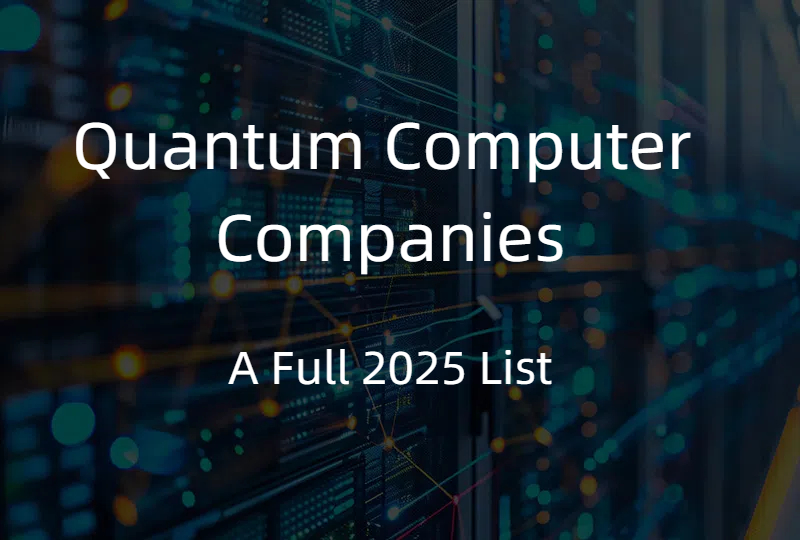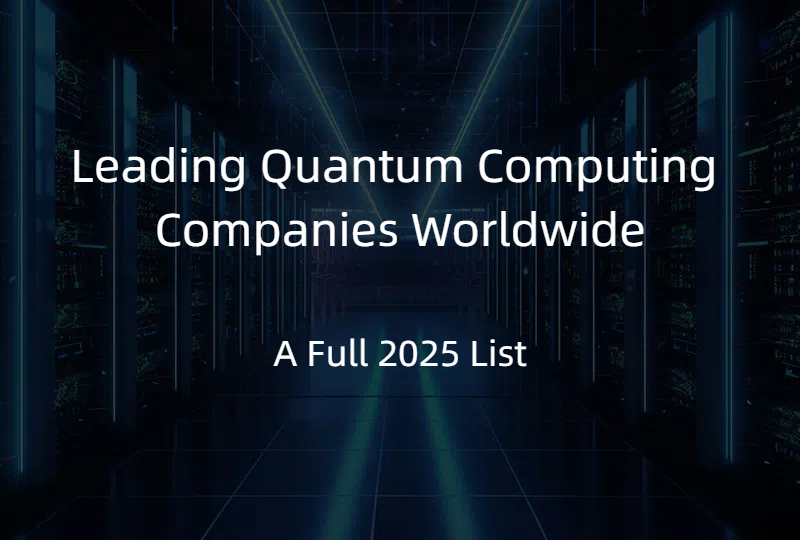Quantum Computing Platform – A Complete Guide with SpinQ Solutions
2025.08.18 · Blog Quantum Computing Platform
Introduction: What Is a Quantum Computing Platform?
A quantum computing platform is the digital and hardware environment that allows users to design, execute, and optimize quantum algorithms. It combines quantum hardware, software frameworks, simulators, and often a cloud interface to make quantum computing accessible to researchers, educators, and enterprises.
Think of it as the equivalent of a classical computing ecosystem: in the classical world, developers use integrated development environments (IDEs), programming languages, compilers, and processors. In quantum computing, the platform bundles these components—only here, the processors are qubits instead of transistors, and the challenges involve controlling quantum states with extreme precision.
With the quantum industry rapidly evolving, platforms have become the bridge between theory and real-world application. From classroom learning to industrial-grade computation, they are crucial for advancing adoption.
-
The Core Components of a Quantum Computing Platform
A robust quantum computing platform typically includes:
1.1 Quantum Hardware
The “engine” of the platform, this can be based on different quantum technologies:
-
Nuclear Magnetic Resonance (NMR) – Stable, room-temperature systems, excellent for education and prototyping (e.g., SpinQ’s Gemini and Triangulum series).
-
Superconducting Qubits – High-speed operation with scalability potential, but requires cryogenic cooling.
-
Trapped Ions, Photonic Systems, and Others – Each with unique performance trade-offs.
1.2 Programming Framework
A software development kit (SDK) or framework allows users to write quantum programs. Leading platforms support:
-
Python-based interfaces for flexibility.
-
Graphical circuit editors for intuitive design.
-
OpenQASM compatibility for interoperability.
1.3 Simulators
Simulators allow developers to test algorithms on classical hardware before running them on quantum processors. SpinQ Cloud, for example, offers simulators up to 24 qubits.
1.4 Cloud Access
A cloud interface connects users to quantum hardware without the need for local installation, enabling:
-
Multi-user collaboration.
-
On-demand scaling.
-
Lower cost of entry for institutions.
1.5 Development & Optimization Tools
Platforms often integrate:
-
Algorithm libraries (e.g., Grover’s search, variational quantum eigensolver).
-
Circuit optimization tools.
-
Noise simulation to mimic real-world imperfections.
-
Types of Quantum Computing Platforms
2.1 On-Premise Platforms
Installed locally with dedicated quantum hardware, ideal for institutions needing full control over their systems.
2.2 Cloud-Based Platforms
Access to remote quantum devices over the internet—perfect for those without physical infrastructure.
2.3 Hybrid Platforms
Combine local resources (e.g., small-scale quantum devices) with cloud-based access to larger systems.
-
SpinQ’s Quantum Computing Platforms
SpinQ Technology offers a full-stack portfolio covering education, research, and industrial use cases.
3.1 SpinQ Gemini Lab
-
Purpose: Education and research in higher education.
-
Features:
-
Covers experiments from pulse-level to algorithm-level.
-
Open architecture for both teaching and exploratory research.
-
Supports quantum mechanics, simulation, precision measurement, and more.
-
-
Advantage: Students can learn both theoretical concepts and practical skills in a single environment.
3.2 SpinQ Cloud
-
Hardware Access: NMR and superconducting systems with 2, 3, 5, and 8 qubits.
-
Simulator: Up to 24-qubit full-amplitude classical simulation.
-
Development Tools:
-
Graphical circuit design.
-
OpenQASM editing.
-
Python and Jupyter Notebook integration.
-
-
Collaboration:
-
Multi-user project sharing.
-
Task scheduling and resource allocation.
-
-
Use Cases:
-
Remote education for quantum courses.
-
Algorithm development without hardware ownership.
-
3.3 SpinQit Programming Framework
-
Language Support: Python-based, compatible with Qiskit syntax.
-
Capabilities:
-
Cross-platform execution (local devices, cloud, simulators).
-
Classical–quantum hybrid programming with ML frameworks like TensorFlow.
-
Multi-level compilation and optimization.
-
Noise simulation for realistic performance testing.
-
-
Benefits: Flexible for both beginners and experienced quantum developers.
3.4 Private Quantum Cloud Services
-
Purpose: Custom-built, secure cloud platforms for enterprises and institutions.
-
Advantages:
-
Full independence from public cloud providers.
-
Tailored hardware access and software configurations.
-
Enhanced security and data sovereignty.
-
-
Key Features of a Modern Quantum Computing Platform
Modern platforms—especially SpinQ’s—share these characteristics:
-
Multi-Technology Compatibility: NMR and superconducting hardware.
-
Scalability: From single-user to multi-user enterprise access.
-
Dual Programming Modes: Visual drag-and-drop and text-based coding.
-
Rich Algorithm Libraries: Ready-to-run examples for faster learning.
-
Real-Time Feedback: Immediate result visualization and export options.
-
Security: Access control and encrypted data channels.
-
Industry Use Cases for Quantum Computing Platforms
5.1 Education & Talent Development
Universities and K–12 STEM programs use platforms to:
-
Teach quantum basics with hands-on labs.
-
Integrate quantum curriculum into physics and computer science courses.
-
Prepare students for careers in quantum technologies.
5.2 Scientific Research
Research institutions leverage platforms for:
-
Quantum chemistry simulations.
-
Materials science exploration.
-
Algorithm development for optimization problems.
5.3 Enterprise Applications
Businesses adopt platforms for:
-
Financial modeling and risk analysis.
-
Manufacturing optimization and logistics.
-
Drug discovery pipelines.
5.4 Government & Defense
Government agencies use platforms to explore:
-
Secure quantum communications.
-
Cryptography-resistant security systems.
-
Benefits of Quantum Computing Platforms
-
Lower Entry Barriers: Cloud access means no need for expensive lab infrastructure.
-
Accelerated Development: Simulators allow rapid iteration before deploying on real hardware.
-
Collaboration: Multi-user features support global teamwork.
-
Cost Efficiency: Pay-as-you-go cloud models and modular hardware reduce upfront investment.
-
SpinQ Platform Pricing Tiers
| Platform | Target Use | Key Features | Typical Cost |
| Gemini Lab | Universities, research labs | Full experimental range, open hardware access | Tens of thousands USD |
| Gemini Mini / Triangulum Mini | Schools, training programs | Portable NMR, built-in curriculum | From ~$7,000 |
| SpinQ Cloud | Global researchers | Real hardware + simulators, collaboration tools | $1,000–$5,000 per quantum processing hour |
| SpinQit Framework | Developers, researchers | Python SDK, hybrid programming | Included with SpinQ systems |
| Private Quantum Cloud | Enterprises, national labs | Secure, customized infrastructure | Custom pricing |
-
Future Trends in Quantum Computing Platforms
-
Low-Code/No-Code Interfaces: Making quantum development accessible to non-programmers.
-
Hybrid Integration with HPC: Leveraging classical supercomputers for pre- and post-processing.
-
AI-Driven Optimization: Using machine learning to automatically refine quantum circuits.
-
Open-Source Expansion: Community-driven development of quantum libraries.
-
More Affordable Hardware: Miniaturization and standardization will lower platform costs.
-
Conclusion
Quantum computing platforms are the gateway to unlocking the potential of quantum hardware. They provide the tools, interfaces, and resources to turn abstract quantum algorithms into working applications.
SpinQ’s ecosystem—spanning Gemini Lab, SpinQ Cloud, SpinQit, and private cloud services—offers a scalable path for students, researchers, and enterprises to enter the quantum era.
Whether you want to teach the fundamentals, develop new algorithms, or run enterprise-grade quantum workloads, the right platform ensures accessibility, flexibility, and long-term value. And with options ranging from a few thousand dollars to enterprise-scale deployments, SpinQ ensures that quantum computing is no longer a distant future—it’s a practical tool for today.
Featured Content






